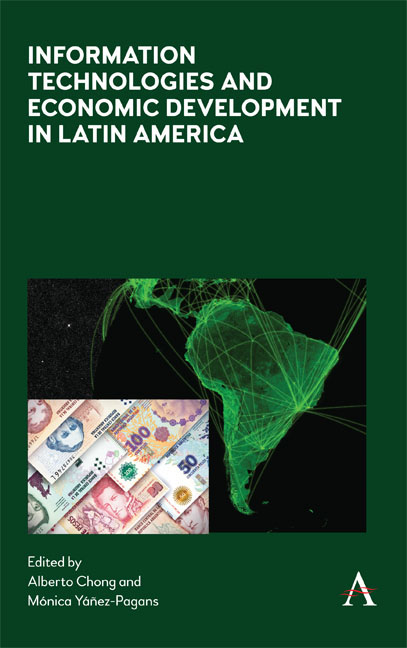Book contents
- Frontmatter
- Contents
- List of Illustrations
- List of Editors
- List of Contributors
- Acknowledgments
- Chapter 1 Information Technologies in Latin America
- Chapter 2 The Impact of ICT in Health Promotion: A Randomized Experiment with Diabetic Patients
- Chapter 3 The Impact of ICT on Adolescents’ Perceptions and Consumption of Substances: Evidence from a Randomized Trial in Uruguay
- Chapter 4 Text Messages as Social Policy Instrument: Evidence from a Randomized Controlled Trial with Internal Refugees in Colombia
- Chapter 5 Radio and Video as a Means for Financial Education in Rural Households in Peru
- Chapter 6 Digital Labor-Market Intermediation and Subjective Job Expectations
- Chapter 7 From Cow Sellers to Beef Exporters: The Impact of Traceability on Cattle Farmers
- Chapter 8 The Labor Market Return to ICT Skills: A Field Experiment
- Chapter 9 Soap Operas for Female Micro Entrepreneur Training
- Index
Chapter 5 - Radio and Video as a Means for Financial Education in Rural Households in Peru
Published online by Cambridge University Press: 30 April 2020
- Frontmatter
- Contents
- List of Illustrations
- List of Editors
- List of Contributors
- Acknowledgments
- Chapter 1 Information Technologies in Latin America
- Chapter 2 The Impact of ICT in Health Promotion: A Randomized Experiment with Diabetic Patients
- Chapter 3 The Impact of ICT on Adolescents’ Perceptions and Consumption of Substances: Evidence from a Randomized Trial in Uruguay
- Chapter 4 Text Messages as Social Policy Instrument: Evidence from a Randomized Controlled Trial with Internal Refugees in Colombia
- Chapter 5 Radio and Video as a Means for Financial Education in Rural Households in Peru
- Chapter 6 Digital Labor-Market Intermediation and Subjective Job Expectations
- Chapter 7 From Cow Sellers to Beef Exporters: The Impact of Traceability on Cattle Farmers
- Chapter 8 The Labor Market Return to ICT Skills: A Field Experiment
- Chapter 9 Soap Operas for Female Micro Entrepreneur Training
- Index
Summary
Introduction
This chapter analyzes the impact of a financial literacy training of a Peruvian microfinance institution, which is delivered by credit officers in monthly sessions with the support of video and radio materials. The program, conducted by Arariwa, a non-government organization, was implemented as a field experiment working with 49 credit officers across 665 communal banks in 13 provinces of the departments of Cusco and Puno, Peru. The objective of the study is to rigorously evaluate the effect of an ICT-based financial literacy education program that follows best practices on financial literacy and financial behaviors. We study the impact of a financial literacy education program using a randomized evaluation, which was designed to determine short-term effects and may be extended to determine long-term effects. Furthermore, we determine the effectiveness of using a radio and video supplemented credit with education financial educational program. The literature and experiences worldwide suggest that this methodology is likely to be the most cost-effective and we would like to quantify the benefit of this approach.
The field experiment included working with 49 credit officers across 666 communal banks in 13 provinces of the departments of Cusco and Puno during 2010. The program evaluated consists of (1) nine monthly 45 minute training sessions which involve the use of a 5-to 7-minute video, (2) nine 25-minute radio programs that reinforce the material in the training sessions and (3) nine homework assignments that encourage households to commit to behavioral changes. Credit officers were expected to deliver the training session with the video during the routine communal bank meetings and clients were expected to listen to the radio and do the homework assignment between bank meetings.
The low-cost strategy for implementation of the video and radio components led to low compliance rates with the video and radio components. According to credit officer's estimates, the median treatment bank received only one video session and only 7 percent of its clients listened to the radio program. Given this, we divide our analysis into four parts that allow us to determine the impact of the program. First, we determine the impact of the program on those that the program intended to treat. Second, we determine the impact of the program on those that completed a relatively high number of training sessions but with average ICT compliance.
- Type
- Chapter
- Information
- Publisher: Anthem PressPrint publication year: 2020



